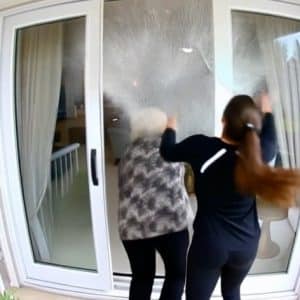I was gone for just two hours—enough time to run errands and pick up a birthday gift. Kelsie, our babysitter, came highly recommended: early childhood education major, CPR certified, the whole package. I expected everything to be fine.
But when I walked in, something felt wrong.
The house was too quiet. The TV was blaring, toys were everywhere—but no kid noise. Then I saw it.
My daughter Ellie was locked inside our dog crate.
Her cheeks were red from crying. Her twin brother stood beside her, barefoot, pointing like it was a game. I froze.
“What’s going on?” I asked.
Kelsie, scrolling her phone in the kitchen, said calmly, “They were playing zoo. She wanted to be the tiger.”
But Ellie whispered, trembling, “She locked it, Mommy. I didn’t want to play anymore.”
The latch was shut. Kelsie shrugged, “She was being dramatic. I didn’t want to encourage that behavior.”
I was stunned.
I unlocked the crate and Ellie clung to me like she’d been rescued. Max looked confused, unsure if he’d done something wrong. Kelsie? Still on her phone.
“You locked a four-year-old in a crate?” I asked.
“She needed a time-out. It’s not like she was in danger.”
Trying to stay calm, I took a photo of Ellie’s tear-streaked face and told Kelsie to pack up and leave.
She muttered that parents today are too soft.
Once the door closed, I held both kids close. Later that night, I sent the photo and a message to the babysitting agency. They responded quickly—shocked—and promised she’d be removed.
Still, something felt off. The next morning, I called Ellie’s preschool teacher.
When I asked if Ellie had ever said anything odd about home, there was a pause.
And that silence said everything.




